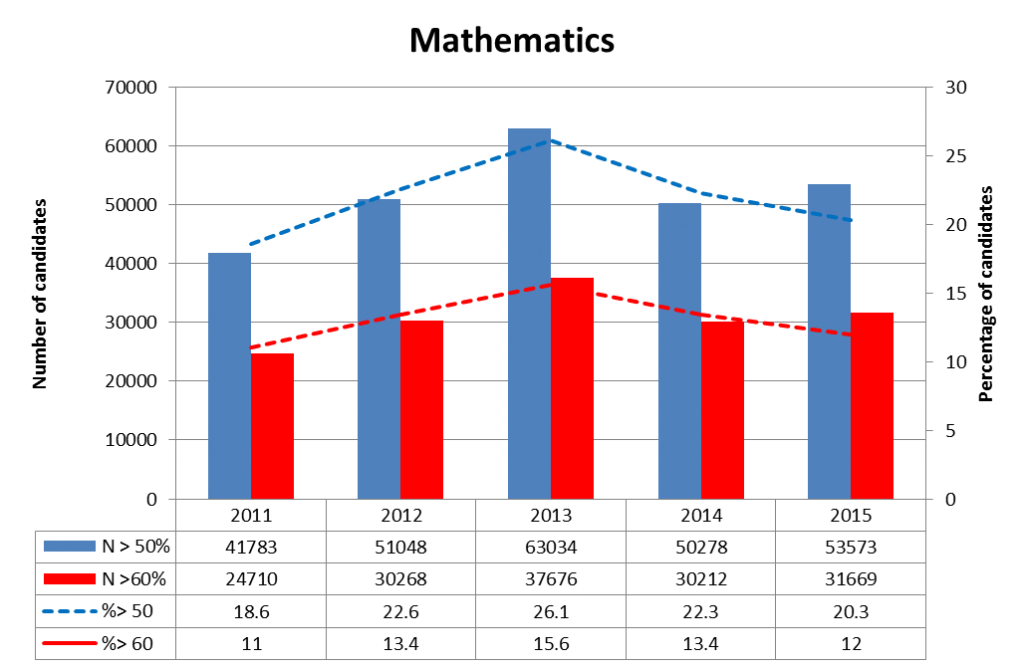Matric: Better or worse?
It is almost obligatory to participate in the January conversations around the matric results. The Department of Basic Education must be commended for the comprehensive 2015 NSC Diagnostic Report which provides data for us to interrogate the results further. These statistics have been sliced and packaged in different ways by analysts and politicians to illustrate particular points. Our contribution is to analyse the matric results in relation to meeting the demand for high level scarce skills in the country – that is to access and achieve success in Science, Engineering, Commerce, Health and Health Related courses and programmes at tertiary institutions. Access to these programmes depends on high quality school mathematics and science passes. The knowledge required for these subjects is cumulative and cannot be remediated through catch up programmes.
Using the National Senior Certificate results from 2011-2015, we explored the progress made along the education pipeline. The Mathematics and Physical Science performance trends, from 2011 to 2015, for those scoring above 50% and above 60% are presented below. Learners who achieved these results will constitute the potential pool to study courses in the Science, Engineering and Technology (SET) areas. It is important to look at both the actual number of learners (bar graph with numbers on the left axis) achieving the requisite passes as well as percentages (dotted line with percentages indicated on the right axis).
What do these two graphs tell us?
Firstly, 53573 (20.3%) mathematics learners and 42502 (22%) Physical Science learners passed with a score higher than 50%. The proportion of those learners achieving above 60% was almost half of this, with just over 31 000 (12%) mathematics learners and close to 24 000 (12.8%) Physical Science learners achieving a score higher than 60%.
Secondly, there was a steady increase in numbers (and percentages) of learners achieving scores above 50%, from 2011 to 2013. These numbers (and percentages) dropped in 2014 and improved slightly in 2015 – although not to the 2013 levels.
Thirdly, while the country boasts a high number of Bachelors passes (166 263 in 2015), the pool of students with mathematics passes that meet university criteria to access the SET and health related courses is only around 30 000. There is a shortage of professionals in the Science, Engineering, Medicine and Commerce sectors, and with only 30 000 students potentially accessing these areas, the graduate output in three or four years will not adequately alleviate our skills shortage.
As we follow the matric examination debates, we must also include statistics on the number of mathematics passes above the 60% mark, so we can keep track of how many learners are able to access key tertiary qualification areas which are experiencing labour market shortages.
Dr Vijay Reddy and Dr Andrea Juan


